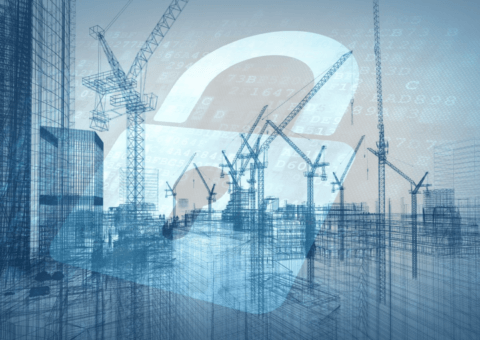Force Majeure in construction is a legal term often invoked during times of crisis. The term Force Majeure encompasses a wide range of unforeseeable circumstances that can disrupt contracts and obligations.
1. What is Force Majeure?
Force Majeure refers to unforeseeable circumstances that prevent someone from fulfilling a contract. In the construction industry, these are typically events outside human control, such as natural disasters or war, which aren’t the result of any party’s fault or negligence and which make it impractical or impossible to fulfill contractual obligations.
2. What Does Force Majeure Mean?
The term "Force Majeure" is French for "superior force." In legal contexts, it refers to a clause included in general conditions of construction contracts to remove liability for natural and unavoidable catastrophes that interrupt the expected course of events and prevent participants from fulfilling obligations.
3. Force Majeure Example
An example of Force Majeure in construction is COVID-19 pandemic. This global event activated the Force Majeure clause of many construction contracts, excusing the construction company from meeting its original timelines without penalty.
4. The History of Force Majeure
The concept of Force Majeure originated in French law as a doctrine to excuse parties from liability when an unforeseen event, beyond their control, prevented them from fulfilling their contractual duties. Over time, this concept has been adopted globally in various legal systems and industries, each tailoring the idea to fit specific needs and risks associated with their sector.
5. Causes of Force Majeure
Causes of Force Majeure generally include acts of god or natural disasters (like earthquakes, floods, hurricanes), war, terrorism, riots, government actions or prohibitions, strikes, and explosions. These causes must be external, unforeseeable, and completely beyond the control of the contracting parties.
6. Likelihood of Force Majeure
The likelihood of a Force Majeure event occurring can vary greatly depending on geographical location and socio-political environment. For instance, areas prone to natural disasters may have a higher likelihood of such events, affecting local construction projects more frequently.
7. Consequence / Impact of Force Majeure Weather Events
The impact of Force Majeure on a construction project can be extensive, often leading to delays, increased costs, or the inability to complete the project. Long-term consequences might also include legal disputes over contract terms, financial losses for stakeholders, and damage to reputation. Effective risk management strategies must be in place to mitigate these impacts as much as possible.

8. Force Majeure Clauses in Construction Contracts
Force Majeure clauses appear in Standard Form Contracts in Australian and North America, with contract authorities such as Standards Australia and AIA Contract Docs respectively.
AIA Contract Documents
AIA Contract Documents include specific provisions for Force Majeure events and require the contractor to notify the architect and owner promptly of the occurrence of a Force Majeure event. In response to such events, the AIA typically allows an extension of time for performance but does not provide for an automatic right to additional payment.
Standards Australia
Standards Australia's construction contracts such as AS 4000 and AS 4902, include Force Majeure clauses that are somewhat similar to those in the AIA documents. These clauses also provide a definition of Force Majeure events, which typically include acts of God, strikes, lockouts, general disturbances, and acts of government that might delay or prevent the execution of the work. Either party is generally entitled to an extension of time if a Force Majeure event occurs, provided that they promptly notify the other party of the event and its expected impact on the project. Compensation adjustments are typically limited, focusing mainly on time extensions rather than financial compensation.
9. Mitigations and Treatments for Force Majeure Risk
Mitigating and treating Force Majeure Risk on your capital project is straight forward with careful planning, contract management, and proactive measures. Remember, Force majeure events are unexpected and beyond the control of the parties involved so there isn't a direct remedy to reduce likelihood, but there are things you can do to reduce it's impact when (not if!) it occurs.
Contractual Provisions
- Detailed Force Majeure Clauses: It's essential to define clearly what constitutes a force majeure event within the contract. This should include specific examples relevant to the project's location and nature. The clause should also outline the procedures for notification, duties during a force majeure event, and criteria for contract termination or suspension.
- Flexible Scheduling and Extensions: Contracts should allow for flexible project timelines with provisions for extension of time (EOT) in case of force majeure. This helps to accommodate delays without penalizing the contractor, reducing financial and legal disputes.
- Risk Allocation: Define which party is responsible for various risks and their mitigation. Project Owner? General Contractor? Proper risk allocation can incentivize parties to take preventive measures and manage the force majeure events more efficiently.
Practical Measures
- Comprehensive Insurance: Ensure comprehensive insurance coverage that includes clauses for force majeure events. This coverage should ideally protect all parties from significant financial losses caused by delays or damages due to uncontrollable events.
- Robust Project Management: Implement robust project management practices, including regular risk assessments and updates to the risk management plan. Early identification of potential force majeure risks allows for more effective strategies to be put in place.
- Emergency Response Plan: Develop and regularly update an emergency response plan tailored to potential force majeure scenarios. This plan should include steps for securing the site, safeguarding materials and equipment, and ensuring the safety of all personnel.
10. Risk Management and Reporting of Force Majeure
As we've seen above, there are alot of considerations when it comes to Risk Management. Implementing Risk Management and Reporting controls will make managing this risk easy, and ensure success of your Capital Project.
- Risk Management Plan: Download a free Risk Management Plan Template and put a Risk Management process in place.
- Risk Register: Download a manual Risk Register Template or use an automated Risk Register solution to track all risks, causes, consquences and mitigations.
- Reporting: Create automated Risk Reports, Project Status Reports or Dashboards for communicating with stakeholders. If you need a free Report Template, you can find some examples here.

Why take the 'Risk'? 😂Start today with Mastt's fast, easy Risk Management solution
Replace spreadsheet risk registers instantly and unlock opportunities to complete Capital Projects earlier with reduced costs using Mastt.























